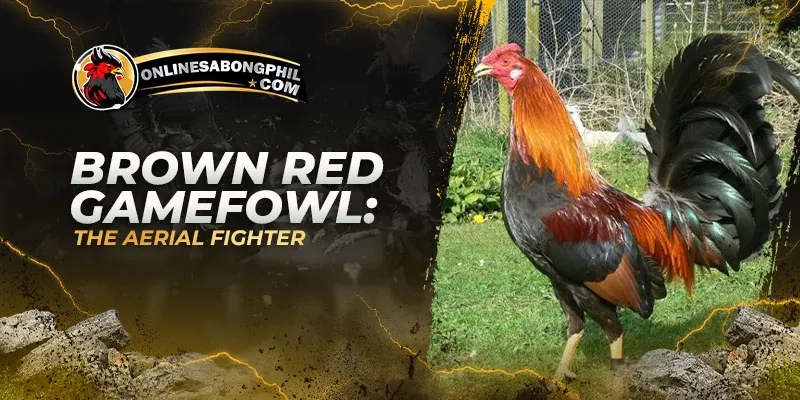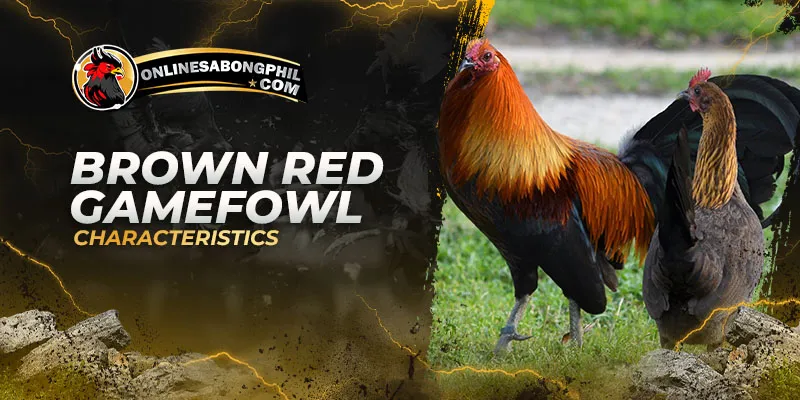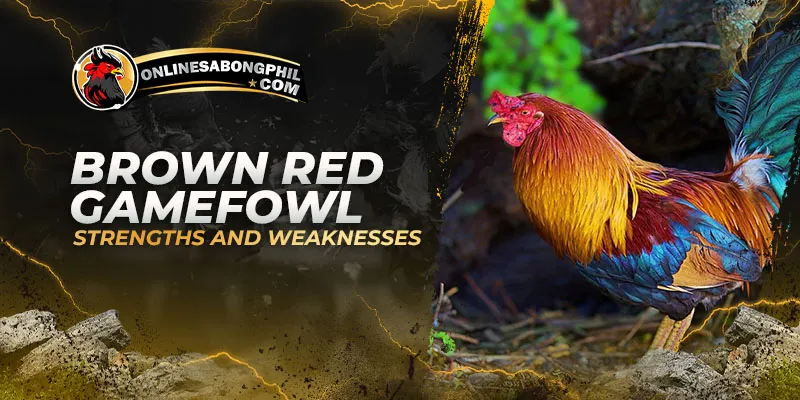Brown Red Gamefowl is a historic breed dating back to the 1800s. With their deep mahogany to reddish-brown plumage, dark legs, and hazel eyes, they boast a striking appearance. Once used for cockfighting, they are now mostly admired for their beauty and athletic build. Their alert posture reflects their tenacious spirit. While not prolific egg layers, Brown Reds are hardy birds that make interesting additions to experienced poultry flocks.
Brown Red Bloodline History
The Brown Red Gamefowl, also known as Wingate Brownred, is a historic breed in gamecock fighting, recognized for its distinct red and brown plumage with occasional white feathers. Originating from the stock of Mr. Gay’s uncle near Cornell, the breed was further developed by notable breeders such as Mike Kearney, Herman Duryea, and E.W. Rogers.
Mike Kearney, renowned for breeding gamecocks like the white hackles and brown reds, set a high standard for gameness, with many of today’s gamest fowl tracing back to his lineage. Herman Duryea, closely associated with Kearney, successfully bred the Duryea white hackles, known as one of the greatest gamefowl families, maintained through strict inbreeding for over 30 years. E.W. Rogers, through his publication ‘The Warrior’ from 1927 to 1935, featured numerous accounts of the Kearney and Duryea fowl, largely penned by A.P. OConor, who regarded Duryea as the foremost gamefowl breeder of his time.
Brown Red Gamefowl Characteristics
The Brown Red Gamefowl boasts a distinctive set of characteristics that reflect its storied history and functional evolution in the realm of cockfighting. Here are some of the characteristics of brown-red gamefowl:
Physical Traits
- Striking Plumage: Reddish-brown feathers with possible hints of ginger or even black accents, creating a beautiful contrast with their dark legs and hazel eyes. Occasional white feathers might appear on the tail or wings.
- Medium-sized: Not the biggest chickens, but possess a well-proportioned and athletic build. Hens are noticeably smaller than roosters.
- Alert Posture: Stand tall and proud, reflecting their active nature. Their heads are held high, with bright eyes constantly surveying their surroundings.
Behavioral Traits
- Athletic: Bred for cockfighting in the past, they retain their agility, impressive stamina, and quick reflexes. They might enjoy activities that test their strength and speed.
- Hardy: Known for their resilience and adaptability to various environments. They can tolerate both heat and cold relatively well.
- Free-Ranging: I prefer to forage and explore over being confined and enjoying an active lifestyle.
Temperament
- Tenacious: Inherent gameness from their fighting background, though not necessarily aggressive towards humans. They can be determined and spirited.
- Alert: Their watchful posture suggests a good level of alertness, making them potentially good watchbirds. They are quick to notice changes in their environment.
- Independent: While they form social hierarchies, Brown Reds can be self-sufficient and less clingy than other breeds.
Overall, the Brown Red Gamefowl’s blend of physical vigor, resilient nature, and independent temperament makes it a standout breed, both in past competitions and in modern diverse environments.
Brown Red Gamefowl Fighting Style
The Brown Red Gamefowl’s fighting style showcases their exceptional athleticism and dynamic combat techniques, honed through a history of cockfighting.
- Fast and Shuffling: Brown Reds were known for their shuffling footwork – quick lateral movements that helped them confuse opponents and find openings. This style demanded exceptional agility and reflexes.
- Aerial Combat: They favored jumping and striking in the air, using their powerful legs to deliver blows.
- Determined: These birds possessed the gameness to fight through fatigue and injuries, often leading to prolonged matches.
- Agility and Reflexes: Their quick shuffling movements translate into overall nimbleness and adaptability to new movements or challenges.
- Muscular Legs: Designed for leaping and striking, modern Brown Reds still possess well-developed leg muscles, making them capable jumpers.
- Tenacity: The breed’s inherent gameness translates into determination and a spirited personality. They won’t give up easily when faced with a challenge.
With their remarkable agility, powerful leg strength, and unyielding tenacity, Brown Red Gamefowl continue to demonstrate their adaptability and spirited nature in both competitive and everyday environments.
Brown Red Gamefowl Strengths and Weaknesses
The Brown Red Gamefowl embodies a mix of remarkable strengths and manageable weaknesses, reflecting its heritage as a seasoned fighting breed. Here are the strengths and weaknesses of a gamefowl:
Strengths
Athleticism: Their legacy as fighting birds translates into impressive athleticism. This includes:
- Agility: Quick reflexes and nimble movements make them excellent athletes.
- Stamina: Bred for endurance, they can maintain activity for long periods.
- Power: Well-muscled legs contribute to jumping ability and explosive bursts of speed.
Resilience: Known for their hardiness and adaptability to various environments. They tolerate heat and cold relatively well.
Alertness: Their watchful nature makes them potentially good watchbirds, quick to notice changes in their surroundings.
Unique Beauty: Their striking reddish-brown plumage with hints of ginger and dark legs with hazel eyes make them stand out.
Weaknesses
- Predisposition to Aggression: Due to their fighting background, some Brown Reds might exhibit higher aggression levels, especially towards other roosters. Responsible breeding practices can help mitigate this.
- Not Prolific Layers: While they lay eggs, they are not known for high egg production compared to other breeds.
- Potential for Flight: Their athleticism can translate to an ability to fly over fences, requiring secure enclosures.
- Independent Streak: While social, they can be less clingy than other breeds, requiring experienced owners who understand their independent nature.
While the Brown Red Gamefowl’s strengths in athleticism and alertness make it a distinguished and captivating breed, its potential challenges, such as aggression and the need for secure housing, require thoughtful and experienced handling.
The Lifespan of Brown Red Gamefowl
The lifespan of Brown Red Gamefowl, like other standard chicken breeds, typically ranges from 5 to 8 years. However, their longevity can vary depending on factors such as care, nutrition, housing conditions, and whether they are used for fighting, which can significantly reduce their lifespan. With optimal care and a peaceful living environment, Brown Red Gamefowl can potentially live longer, possibly reaching up to 10 years or more.
Conclusion
Brown Red Gamefowl are top sabong bloodlines known for their striking appearance and athleticism. These birds possess remarkable agility, stamina, and resilience. While their natural aggression and lower egg production can be challenges, their beauty, alertness, and potential for a long lifespan up to 10 years make them attractive to experienced handlers.
Visit us at Onlinesabongphil.com for more guides and tips!



